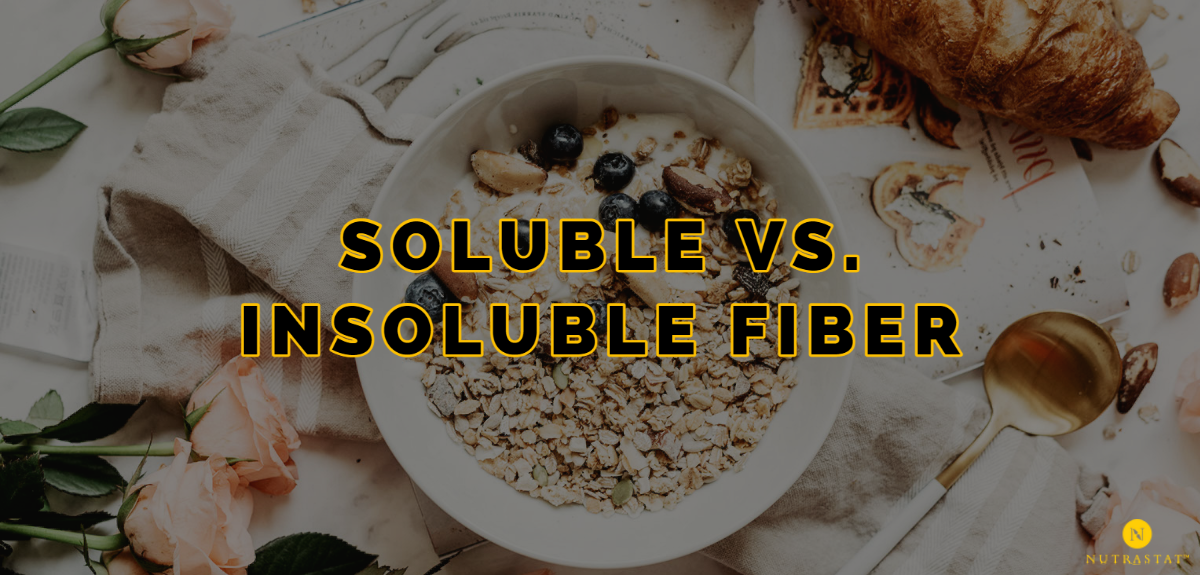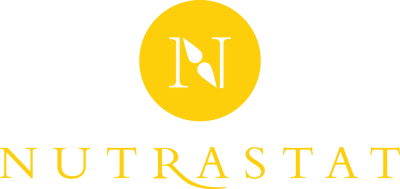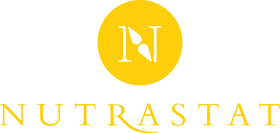Soluble and Insoluble Fibres

On average, most people in Canada and the United States do not get enough dietary fiber necessary to be beneficial. Dietary fibre comes from the parts of plants that our bodies cannot digest, instead they pass through our digestive system without being broken down.

There are two main types of fibre: soluble and insoluble. Both of these fibres have their own benefits and are important to maintaining a healthy lifestyle.
Soluble fibres are easily dissolved in water. As these fibres are digested, they absorb fluid and create a gel-like substance in your digestive system. The absorption of water can help with diarrhea, while the thick lining that is formed helps slow your digestion resulting in you feeling fuller longer, reduces cholesterol levels, and helps to moderate blood sugar levels.
Like the name suggests, insoluble fibres cannot be dissolved in water. These fibres are not easily digestible and remain intact as they move through your gastrointestinal (GI) tract. This process promotes the movement of food through your digestive system, improving your gut health and regularity, and even helping with constipation.


Where can you get each type of fiber?
The amount of fibre in food varies. To get the greatest health benefit you should try to eat a wide variety of high fibre foods as each one will provide different amounts of soluble and insoluble fibres.
Fibre can be found in fruits, legumes, nuts and seeds, vegetables, and whole grains such as barley, cereals, pasta, and oats. Most of these categories have foods that contain both soluble and insoluble fibre. A breakdown of each category can be seen below.
Foods high in soluble fibre include:
- Whole Grains: barley (NutraStat’s active ingredient), oats, and psyllium
- Vegetables: sweet potatoes, broccoli, turnips, Brussel sprouts, carrots
- Fruits: apples, blueberries, avocados, pears, figs, nectarines, apricots, guavas, citrus fruit
- Legumes: kidney beans, black beans, lima beans, soybeans, lentils, peas
- Nuts and Seeds: flax seeds, sunflower seeds, hazelnuts
Foods high in insoluble fibre include:
- Whole Grains: whole-wheat flour, wheat bran, brown rice, couscous, quinoa
- Vegetables: cauliflower, green beans, potatoes, celery, cucumbers, corn, spinach, kale
- Fruits: strawberries, grapes, kiwi, raspberries, pineapple, rhubarb
- Legumes: lentils, chickpeas,
- Nuts and Seeds: peanuts, almonds, walnuts, pumpkin seeds, chia seeds, sesame seeds


NutraStat as a Fibre Supplement
Since most people are only getting about half the recommended amount of fiber per day, the best way to ensure you are getting enough fibre is to use a fibre supplement like NutraStat. Our fibre has been carefully designed to be the most natural and effective fibre supplement on the market. We only use 100% non-GMO Canadian barley to extract our beta-glucan fibre, which is a natural fibre occuring in the barley grain.One serving of Nutrastat (3 tablespoons) contains 18% of your recommended daily intake of fibre. It is made completely from barley and is extracted without the use of any chemicals, enzymes, or solvents. We wanted to keep it 100% natural so it can best help support your digestive system, better maintain blood sugar levels, and naturally maintain healthy cholesterol levels.





